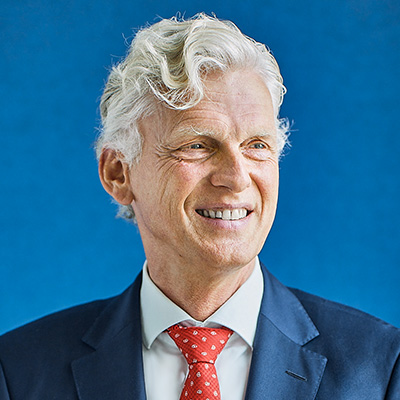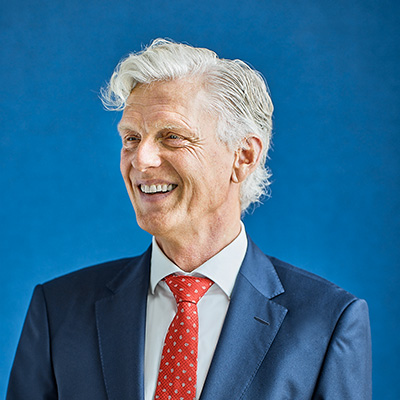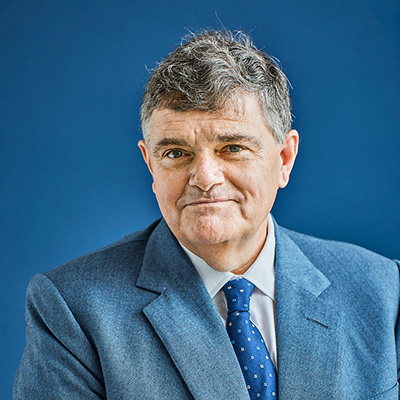
The Unwearable Collection™: A fashion line no one would dare choose
Fashion collections have a specific purpose: they are designed for people to buy and to.
Read more












There’s a close connection between humans and animals when it comes to their health and wellbeing. This connection lies at the heart of Boehringer Ingelheim’s One Health approach.
We sat down with Dr. Clive Wood from Human Pharma and Dr. Eric Haaksma from Animal Health to discuss the advantages of their teams working together — and why we’re seeing increasing crossover between the conditions affecting pets and their owners.
Clive Wood: The health of our global society is a complex system, with a lot of interconnected factors. Having reliable access to food and water, for example, is extremely important for people, and this is rooted in our approach to agriculture. The medicine that we use to keep our livestock healthy can have repercussions for human society. An over-reliance on antibiotics, for example, can increase the risk of antibiotic-resistant bacteria emerging.
Eric Haaksma: Pets also play a significant role in this complex system. The way in which we relate to our pets has changed. In earlier times, people used to leave their dogs outside. Now they’re part of the family; they share a bed with their owners and go with them on holiday. Another part of the One Health approach is the connection between health and happiness. There is a lot of evidence that spending time with animals has a positive impact on people.
Clive Wood: All our research and development efforts are aimed at making new discoveries. Helping each other makes it easier to achieve that goal. The Human Pharma division is committed to sharing its knowledge and expertise for the benefit of people, animals and the company. If we ignored these synergies, we would be missing out on a huge opportunity to innovate.
Eric Haaksma: I think it’s important that Animal Health now has a fairly large role within the company. A few years ago, we were a small division that focused on very specific areas like swine vaccines. Back then, our interaction with Human Pharma was limited to someone occasionally coming over with information about something they had discovered and asking us if it was something we had any interest in.
Then, in 2016, Boehringer Ingelheim acquired Merial, a French company that specialized in animal health. This massively increased the size of the company’s Animal Health division and gave it a new sense of responsibility and ambition. Our new role is to find solutions to a wide range of conditions that companion animals as well as livestock can suffer from. We’re not alone in this endeavor — we know that we are working shoulder to shoulder with our colleagues in Human Pharma.

Dr. Eric Haaksma (left) and Dr. Clive Wood are convinced that the health of humans, animals and the planet is intertwined and that when animals are healthy, humans are healthy too.
Clive Wood: Cancer research is one of the main areas. We see similar genetic changes at work in humans and dogs when tumors emerge. That means that any new treatments that Human Pharma develops in the fight against cancer could also benefit dogs.
Eric Haaksma: The Animal Health division really benefits from being able to draw on all of the chemical and molecular research going on at the company. We are now at the stage where we can contribute to other divisions in the same way.
Immune disorders in people and animals share a lot of the same underlying mechanisms. The illnesses themselves might look very different, but they occur for similar reasons. That’s why we share any new discoveries we make about molecules or chemicals as we develop solutions to combat these disorders. Another interesting field is anxiety and stress, which affect both people and animals. Knowledge transfer allows us to come up with interesting angles to approach this area.
Eric Haaksma: Our Research and Development departments worked with Marketing to put together a Disease Map, which gives us an idea of the diseases and treatments that are going to play a significant role over the next 10 to 15 years. That approach is consistent with Boehringer Ingelheim’s culture of focusing on long-term objectives in line with the values of a family company.
Take the use of antibiotics in livestock farming, for example: Ten years ago, it was an acceptable practice. Today, it’s heavily debated, and it’s safe to assume that it won’t be considered acceptable ten years from now. This will change the market and put us in a position where we need to find solutions that will keep livestock healthy without resorting to antibiotics.
There are also some long-term trends emerging when it comes to pets. More and more cats are being kept inside, and dogs aren’t getting as much exercise as they used to. The amount of food they eat and what they eat is changing as well, and advances in medicine mean that pets are living longer.
Similar genetic changes are at work in humans and dogs. New treatments that Human Pharma develops could also benefit dogs.
Many of the same underlying mechanisms are shared in people and animals. The illnesses might look different, but they occur for similar reasons.
These problems affect both people and animals, and have an impact on physical health. Knowledge transfer allows Boehringer Ingelheim to come up with interesting angles to approach this area.
Eric Haaksma: Exactly! I used to work in Human Pharma, and the parallels are obvious. We are seeing more and more overweight cats and dogs, diseases like diabetes are becoming more prevalent, and elderly pets are much more at risk of cancer.
Clive Wood: Even though we have already made great strides in terms of research and development, I think we should focus even more on evaluating the efficacy of specific treatments in humans and animals. A systematic approach based on clinical studies would open up some outstanding options, like being able to study cancer treatments in dogs before proceeding to human trials.
Eric Haaksma: It’s a classic win-win situation. Human Pharma benefits from the data about the efficacy of treatments in dogs, while pets gain early access to innovative treatments.
Eric Haaksma: It’s an idea that has been discussed, but we felt that there are still some crucial differences between the two fields. What we really want to do is to maximize synergies so that we do the best possible job at meeting the needs of human patients on the one side and animals, farmers and pet owners on the other.
Clive Wood: In a certain sense, we have already joined forces — as a driver of innovation at Boehringer Ingelheim.